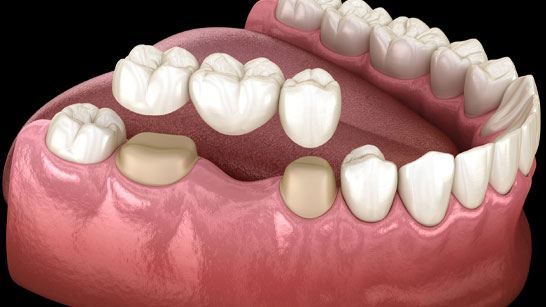Dental Crowns and Bridges: Restoring Smiles
What are Dental Crowns?
A dental crown is a cap placed over a damaged tooth to restore its shape, size, and function.

Benefits of Crowns:
- Protects tooth from further damage
- Restores chewing ability
- Enhances aesthetics
- Supports surrounding teeth
- Long-lasting solution
Types of Crowns:
- Porcelain-fused-to-metal (PFM)
- All-ceramic
- Gold
- Composite resin
- Zirconia
Crown Procedure:
- Consultation and assessment
- Tooth preparation
- Impression taking
- Temporary crown placement
- Permanent crown cementation
What are Dental Bridges?
A dental bridge fills the gap between missing teeth, restoring smile continuity.

Benefits of Bridges:
- Restores chewing ability
- Enhances aesthetics
- Supports surrounding teeth
- Prevents tooth shifting
- Long-lasting solution
Types of Bridges:
- Fixed bridge
- Removable bridge
- Implant-supported bridge
- Cantilever bridge
- Maryland bonded bridge
Bridge Procedure:
- Consultation and assessment
- Tooth preparation
- Impression taking
- Temporary bridge placement
- Permanent bridge cementation
Candidates for Crowns and Bridges:
- Damaged or decayed teeth
- Missing teeth
- Tooth loss due to injury or disease
- Good oral health
- Commitment to regular dental care
Cost
Varies depending on:
- Material and quality
- Complexity of procedure
- Location and dentist expertise
- Insurance coverage
Comparison with Other Restorations:
- Crowns vs. Fillings: Crowns cover entire tooth, fillings fill cavities.
- Bridges vs. Implants: Bridges attach to surrounding teeth, implants replace tooth root.
- Crowns vs. Veneers: Crowns cover entire tooth, veneers cover front surface.
Frequently Asked Questions:
10-20 years or more.
Minimal discomfort during procedure.
Yes, once adjusted.
Varies, but valuable investment.
Yes only after fully healed

